Unless you’ve spent time studying world history, chances are you don’t know a lot about the Congo in central Africa. When Alice Seeley Harris first landed there as a missionary in 1898, she didn’t know much about it either. But all that was about to change. This is a story of greed, cruelty, the darkness of souls, profits, rubber, and genocide. More so, this is the story of how a woman often discarded by history, Alice Harris, stops Congo genocide.

[Warning: Photos may be too graphic for younger viewers. Article contains descriptions of slavery, genocide, torture, rape, dismemberment, and adult themes.]
Though often erased from history, Alice Seeley Harris’ photographs of the native Congolese’s disfigurements and amputations together with her lantern lectures stopped the systematic genocide in the Congo Free State under Leopold II’s reign.
Rubber Industry
If you’ve never given any thought to where rubber comes from or what it’s used for, you’re definitely not alone. Initially, when Europe encountered rubber, they didn’t give it much thought either. Rubber, named by Joseph Preistly, because it rubbed pencil marks off paper, was first observed in South America in the 1490s. Centuries passed before Europeans began using rubber for clothes, shoes, and waterproofing. Comically, during a particularly hot summer all their rubber melted and the once promising substance was abandoned.
A series of events in the late 1800s transformed rubber from obsolete to a hot commodity. First, Charles Goodyear discovered how to prevent rubber from breaking up in the cold and melting in the heat. He invented a process called vulcanization. Sulfur and rubber were melted together to strengthen the rubber. Then, John Dunlop capitalized on this new process by reinventing the pneumatic tire. The tire was a tube filled with air that could cushion bumpy terrain and increase speed on bicycles.
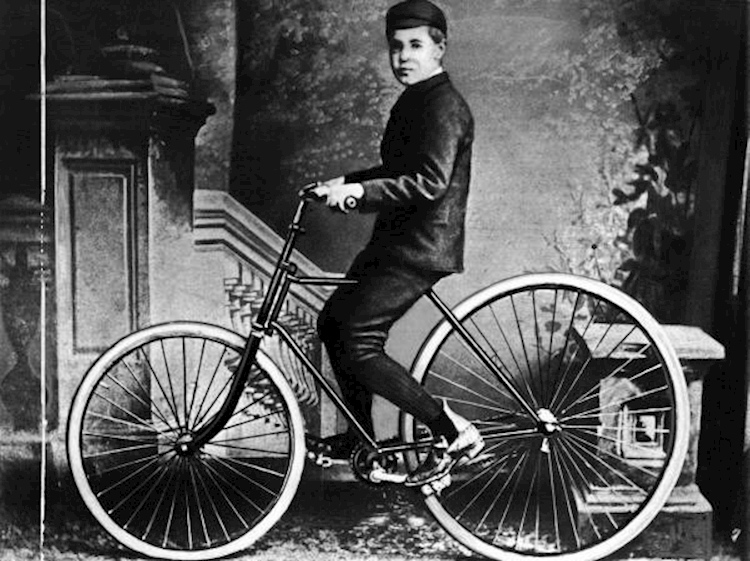
To increase demand, in May 1889, Dunlop asked cyclist William Hume to use the pneumatic tires at the famous Queen’s College Sports bicycle races. Hume won all the events with ease. The demand for tires immediately increased. Between bicycle tires, machinery parts, and a brand new industry, automobiles, Europe could not get enough rubber. The industry was officially born.
King Leopold II: Blessing or Dark Heart?
King Leopold’s Unintentional Monopoly
A few years prior to the rubber industry taking off, Belgian King Leopold II tried to create a monopoly in the ivory industry in the Congo. Importantly, the 1885 General Act of Britain conference paved the way for him. It is important to note that no representatives from Africa were present while Europe was deciding what to do with the Congo. The conference allowed Leopold II to eventually personally own 1 million acres of land he named the Congo Free State, which was neither free nor a state. Internationally, he claimed his motive in the Congo was to “shower the natives with the blessings of Christianity, starched shirts, and steam engines.” Countries like the United States approved of Leopold II’s claims. But while he was claiming to go in with good will, he was actually trying to gain a monopoly on the ivory trade. Leopold II did end up with a monopoly, but not in ivory.
His timing could not have been more perfect (or more terrible, depending on your perspective). While rubber markets were exploding, Leopold II discovered that the Congo Free State had a ready made natural supply of rubber. Europeans frantically cleared land in Asia to plant rubber trees, but they needed time to grow. Leopold II had an abundance in his personal claim. His monopoly on the rubber market continued for almost 10 years.
Violent Tendencies
Initially, King Leopold paid the Congolese natives for collecting rubber. The wealth was shared by some degree with all parties. However, greed took hold. In spite of his record profits, the king quickly realized his rubber profits could be even bigger. The Congo was split up into different sections overseen by sentries (African men hired by the Belgians to look over the rubber production) and Belgian soldiers.

Map of King Leopold’s Congo Free State. Each section had different leaders in charge of collecting rubber and other goods.
Rather than be content with production, King Leopold incited violence in the Congo. He offered sentries and officers bonuses if they could increase rubber production in their sections. The men of the Congo were already producing at top capacity, and now Leopold II wanted even more. With a doubt, he had to know offering large bonuses to his men would lead to violence against the Congolese natives.
Genocide Begins
By the time Leopold II’s reign of terror ended, between 10-15 million Congolese died in the Congo Free State. Mark Twain remarked that if all the skeletons were laid end to end they would stretch from New York to San Francisco. The numbers were staggering. The killings were systematic and fueled by greed and cold hearts.
Many Congolese were killed. Natives were given rubber quotas nearly impossible to meet. When the men did not collect enough rubber, their wives and children were kept prisoner, raped, mutilated, or brutally killed. Sometimes, women and children were held captive by the Belgians with no food and starved to death. Furthermore, the soldiers burned down villages at night destroying homes and gardens so natives would starve and have no place to live. Most of the fatal attacks were against women and children because the men needed to be healthy enough to gather rubber. Disease, lack of food, harsh working conditions, exposure to the elements and wildlife, along with straight up murder wiped out nearly half of the population.
Those who remained alive were tormented. One way the Belgians punished the natives was to tie them down and flog with a chicotte, a hippopotamus hide whip. Soldiers and sentries were required to chop off the right hand of every person they killed. In this way, Leopold II could be certain that the bullets they were using were not “wasted”. If the soldiers shot an animal or something else, they would chop off the right hand of a living person. One hand per bullet! was the rule. There were many reports by natives that they saw baskets and baskets of hands being transported to prove the bullets were not wasted. There were other ways they were tortured. If men did not meet rubber quotas, the sentries chopped off their children’s hands or feet. In one instance, a wife was tied to a tree and cut in half beginning at her left shoulder. Sometimes, to punish men, sentries would cut off their private parts and string them up for everyone to see. While the killing was brutal, the torment, amputations, and maiming was unforgiveable.

Alice Seeley Harris, an English missionary, reported that soldiers burned down the village of Baringa. The soldiers were looking for a place to plant more rubber trees. Rather than wasting time and effort clearing a space in the dense rain forest, they decided burning down Baringa would be more efficient. After all, it was already free of brush and trees. Even though most missionaries were afraid to talk about what they saw, Harris was very forthcoming with details.
Often, natives would report the abuses by the Belgians, but they were complaining to officials who were part of the problem. For example, one man in charge, sentry Fievez, had no mercy. One day, the natives were supposed to supply a certain type of food for the Belgians. They did not supply it all. So, Fievez killed 100 men on the spot. He later reported that “100 heads cut off, and there have been plenty of supplies ever since. My goal is humanitarian. I killed 100 people, but that allowed 500 to live.” Clearly, this kind of thinking was not going to stop the atrocities committed by Leopold II’s men.
Morel & Others Document Congo Treatment
There were several people who came into the Congo to document the abuses going on there. There were reports filed, hearings held, books written, and all of it fell on deaf ears. King Leopold simply retorted that the claims were exaggerated or that building a society from savages was likely to have bumps in the road. He even sent in his own hand picked committee to refute all claims. He never set foot there in all the 23 years in which he owned the Congo Free State. But even if he had seen it first hand, the profits he was making would have overridden any compassion he had for the slaves who were working (and dying) there.
One person who felt passionately about stopping the abuses in the Congo was Edward Morel. Previously, he was a shipping clerk. He noticed that while lots of rubber was coming out of the Congo, the only thing going in were guns, bullets, and soldiers. He surmised, rightly, that the people gathering rubber were doing so at gunpoint. As a result, Morel quit his job, got the support of chocolate millionaire, William Cadbury, and traveled to the Congo to collect evidence. He later wrote, ‘I had stumbled upon a secret society of murderers with a king for a [partner].’ He meticulous recorded and produced several written works like The Affairs of West Africa, Red Rubber, and Congo Newsletter. He printed many articles, newspapers, and other papers about the genocide. The claims were always refuted.
Several other people tried to show the world what was happening in Africa. For example, Roger Casement filed a graphic report that outraged the English. William Sheppard and William Morrison wrote The Black Livingstone based on their experiences with the people of the Congo. Joseph Conrad wrote The Heart of Darkness which exposed additional crimes. Mark Twain penned King Leopold’s Soliloquy. The story was a parody in which the king pouted about the unfairness of complaints against him in the Congo. Even though so much evidence had been gathered, the abuses continued.

Morel started an organization called Congo Reform Association. He gained the help of George Washington Carver, Sir Arthur Conan Doyle, and Mark Twain, among others. to help him spread the word about the happenings in the Congo and raise money to fight the battle at home and abroad. And while their work was excellent, it wasn’t until Alice Harris got involved that they actually started to make head way.
Alice Harris Stops Congo Genocide
Picture Perfect
Alice Harris was a female missionary in the Congo, a woman far ahead of her time. She cared for and worked closely with the village of Baringa. In addition to spiritual work, Harris and her husband Rev Harris built a hospital (it still remains to this day) and taught them English. From all accounts, the tribe did not find them intrusive. When visiting the area 100 years later in the movie White Man, Red Rubber, Black Death, the ancestors spoke highly of the missionaries and considered them friends.
Harris could not have known the impact her chance encounter with Nsala would have on the genocide in the Congo. One day, Nsala came by with leaves in his hands and Harris asked what was going on. Nsala explained that he had come home to his village and could not find his wife and child. He looked around and discovered they had been chopped up and were about to be eaten. Cannibalism was just one more way that the Belgians tortured the natives. Nsala grabbed his daughter’s foot and hand, wrapped them in leaves, and went to the commander to complain. But when he got there, he learned the commander had approved the killings.
Harris had, of course, heard about and seen the horrible things happening to the natives, but this time she took action. She asked Nsala to sit on her Veranda outside her home so she could take a picture. She used a Kodak brownie box camera, new technology at the time, and snapped a photo. It turns out it became THE photo that would help stop the ruthless genocide.
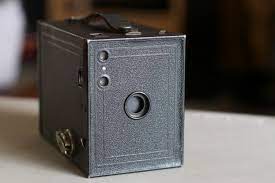
It was a gruesome photo, almost too vulgar to develop. Without a doubt, Alice Harris knew that it would provide undisputed evidence detailing the crimes committed by Leopold II’s men against the Congolese. She would provide the missing link, the photos to support the claims so that people could not only hear about what was happening but see what was happening. They could finally see the things their minds could not dare to imagine.

Alice’s strategy of taking photographs provided air tight evidence against the king, Even Mark Twain recognized this fact in his King Leopold’s Soliloquy when the king said, “the incorruptible kodak [was]…the only witness I couldn’t bribe”.
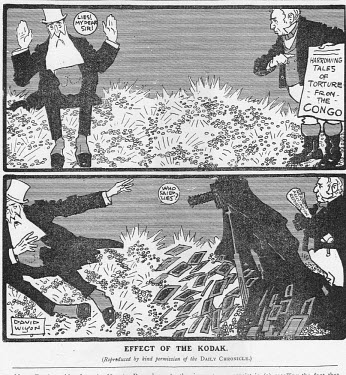
Alice Harris went on to take many pictures of the Congo. Some were beautiful scenes of idyllic countryside. Others were juxtaposed horrors. Whatever the case, Harris became dedicated to documenting the crimes in a brand new way, with photographic evidence Nothing prepared her for the power each photo held.
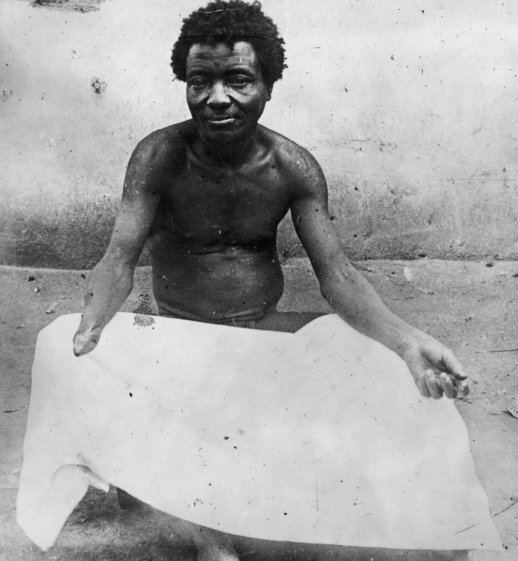



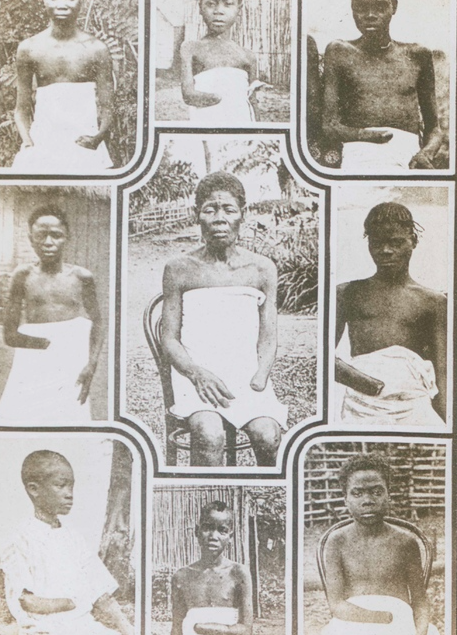





When Alice Harris left the Congo, she immediately joined the Congo Reform Association and began working with Morel. She even went on tour with in a series of “lantern” lectures to share her photos and accounts of things that happened in the Congo.

“Lanterns” were the precursor to overhead projectors. Using her photographs, she projected images which showed the people half way across the world what was really going on in Leopold II’s regime. Even though her name is often not included on the photographs or lecture materials, she gave over 200 lectures in 49 cities throughout the UK and the United States. Her goal, along with her husband, Morel, and others, was to try to pressure those governments to intervene. Harris provided indisputable proof of systematic dismemberment, torture, and death by Leopold’s men in the Congo. It was the smoking gun they had all been waiting for.
Alice Harris Should Be Remembered
While history doesn’t always remember Alice Harris, she worked tirelessly to end the genocide of the Congolese people. Often, her photographs are attributed to her husband, Rev John Harris. He wasn’t even present during her initial photograph of Nsala, nor did he take any of the other pictures. People like Morel and Rev Harris have been credited with orchestrating the human rights campaign that ended genocide. But it was Alice Harris’ photographs that were projected in her 200 lectures throughout the UK and the United States. Even though her name was left of the lantern lecture materials and photos, it was still her photographs that moved people to act. Eventually, the United States and England pressured King Leopold into giving up his personal claims in the Congo Free State. And though often erased from history, Alice Seeley Harris’ photographs of the native Congolese’s disfigurements and amputations together with her lantern lectures stopped the systematic genocide in the Congo Free State under Leopold II’s reign. And she should definitely be remembered for that.

Works Cited
Alice Seeley Harris Archive. antislavery, www.antislavery.ac.uk/
solr-search?q=&facet=collection%3A%22Alice+Seeley+Harris+Archive%22&page=7. Accessed 30 Dec.
2022.
All Around This World. www.allaroundthisworld.com/learn/africa-2/the-congo-for-kids/#.Y69zB3bMK00.
Accessed 30 Dec. 2022.
Used for map of the two countries that used to make up the Congo--today.
All That's Interesting. ATI, 16 Nov. 2022, allthatsinteresting.com/king-leopold-ii. Accessed 30 Dec.
2022.
Used to understand history of King Leopold and mass murders of people in the Congo for his
own profit.
Autograph. Autograph APB, autograph.org.uk/exhibitions/congo-dialogues.
Used for background information on Alice Sweeney and husband Rev John Harris
BBC. 24 July 2019, www.bbc.com/news/business-48533964. Accessed 30 Dec. 2022.
Used for back story on rubber and for information about Goodyear and Dunlop
"Campaigning With a Camera." Panos Pictures, library.panos.co.uk/features/stories/
campaigning-with-a-camera.html#0_00052396.
Cartoon of impact of a Kodak on the Congo situation
Congo Reform Association. www.congoreformassociation.org/cra-history. Accessed 31 Dec. 2022.
Used to get the backstory on the formation of the Congo Reform Association and its initial
members including Mark Twain, Sir Arthur Conan Doyle, and Alice Harris. Also gave
information about Morel and how he got involved in trying to expose Leopold.
Constitutional Rights Foundation. www.crf-usa.org/bill-of-rights-in-action/
bria-16-2-a-king-leopold-s-heart-of-darkness. Accessed 31 Dec. 2022.
Used to obtain history of Morel and Casement.
"1885 General Act of Berlin Conference." Jus Mundi, jusmundi.com/en/document/treaty/
en-general-act-of-the-berlin-conference-on-west-africa-1885-general-act-of-the-berlin-conference-on-w
est-africa-1885-thursday-26th-february-1885. Accessed 31 Dec. 2022.
Used to look at 1885 General Act of Berlin Conference on West Africa agreement put into
force April 19 1886 which freed up the Congo (made it neutral territory) for all European
nations and created the International Commission of the Congo.
Encyclopedia Brittanica. Brittanica, www.britannica.com/topic/Association-Internationale-Africaine.
Information about Association Internationale Africaine formed by Leopold and others to
evangelize and modernize people in the Congo.
Evidence Laid before the Congo Commission of Inquiry at Bwembu, Bolobo. E-book ed., Place of
publication not identified, Nabu Press, 2010.
Book printed by Morel and the Congo Reform Association. The Commission was specifically
picked by Leopold to find in his favor. Morel made sure to print the evidence given to the
commission making it difficult to find in Leopold's favor. First hand accounts of
atrocities against the people of the Congo.
The Free Library. www.thefreelibrary.com/
Light+on+the+dark+continent%3A+the+photography+of+Alice+Seely+Harris+...-a093009102. Accessed
31 Dec. 2022.
Used to gain political and government background on how Leopold took control of the Congo
with the blessings of Europe and the United States. Also used to gain background knowledge
on rubber and how it became a hot commodity beginning in the 1890s.
Frome Town Council. 30 Oct. 2017, www.frometowncouncil.gov.uk/
alice-seeley-plaque-unveiled-merchants-barton/. Accessed 31 Dec. 2022.
Used for background information about Alice Seeley Harris and to find out about the plaque
that was placed with her name.
Gutenberg. www.gutenberg.org/files/50573/50573-h/50573-h.htm. Accessed 31 Dec. 2022.
Used to view the Roger Casement report which points out that reports to Leopold are false
and that natives are treated poorly on a systematic basis.
The History Press. www.thehistorypress.co.uk/articles/
from-discomfort-to-joy-dunlop-s-pneumatic-bicycle-tyre/. Accessed 1 Jan. 2023.
Used to discover the history of Dunlop's tires and company. Picture of his son used.
R, W. Congo Atrocities: A Lecture. Edited by E.D. Morel and J.H. Harris, e-book ed.
Semantics Scholar. www.semanticscholar.org/paper/
The-Unbribable-Witness%3A-Image%2C-Word%2C-and-Testimony-Nunn/
52bd616a42a64f7dc33540cc700a5b422b7cc74c. Accessed 1 Jan. 2023.
Used information about how Alice Harris was dismissed from history and that her photos
were wrongly attributed to John Harris, her husband.
TWAIN, MARK. KING LEOPOLD'S SOLILOQUY. E-book ed., LEFTWORD BOOKS, 2020.
Mark Twain was asked to help with the Congo Free State atrocities and wrote this work to
get the message out about King Leopold's reign of terror. Used for direct quotes from
Twain about his assistance in this matter.
WikiMedia Commons. Map of Congo Territories Under Leopold, commons.wikimedia.org/wiki/
File:Map_of_the_Congo_Territories%E2%80%94Under_the_personal_rule_of_King_Leopold_II.jpg.
Accessed 30 Dec. 2022.
Used to get map of Congo under Leopold's rule.
